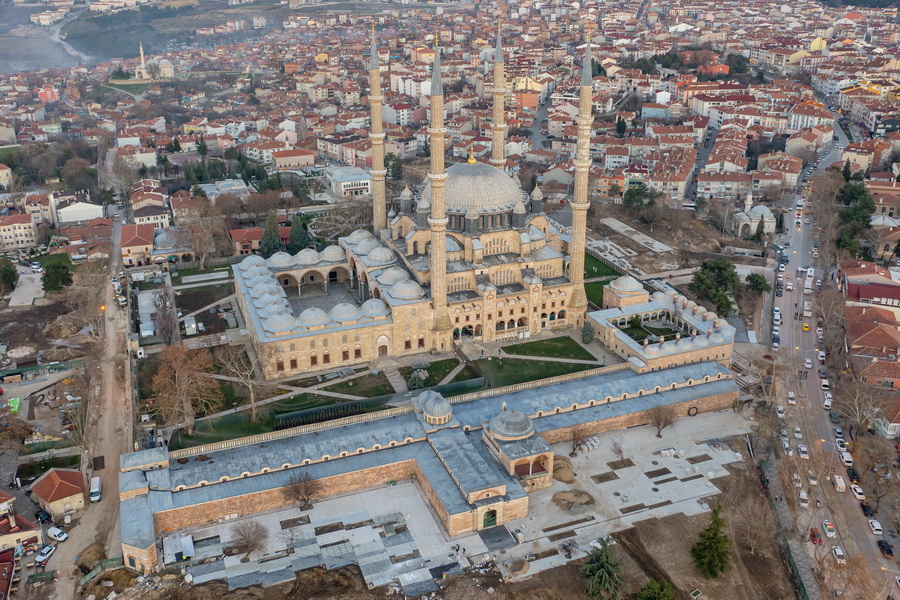
The Balkans, Thrace, and Marmara blended cultures are seen in Edirne Province. That is why there are enough attractions to fill one, two, or even three days for the top things to do in Edirne. The wealth of architectural landmarks will amaze any visitor, and several have been recognised by UNESCO (United Nations Educational, Scientific, and Cultural Organisation). Today, the city is also popular for a day trip from Istanbul, about a three-hour drive away.
Edirne, (historically Adrianople) is the westernmost city of Türkiye in Thrace, on the European side of the Marmara Region. During its 88 years as the capital of the Ottoman Empire (1360-1453) after Bursa, it accumulated many artefacts before being succeeded by Constantinople (İstanbul) after its conquest in 1453.
Where to Go and What to See in Edirne
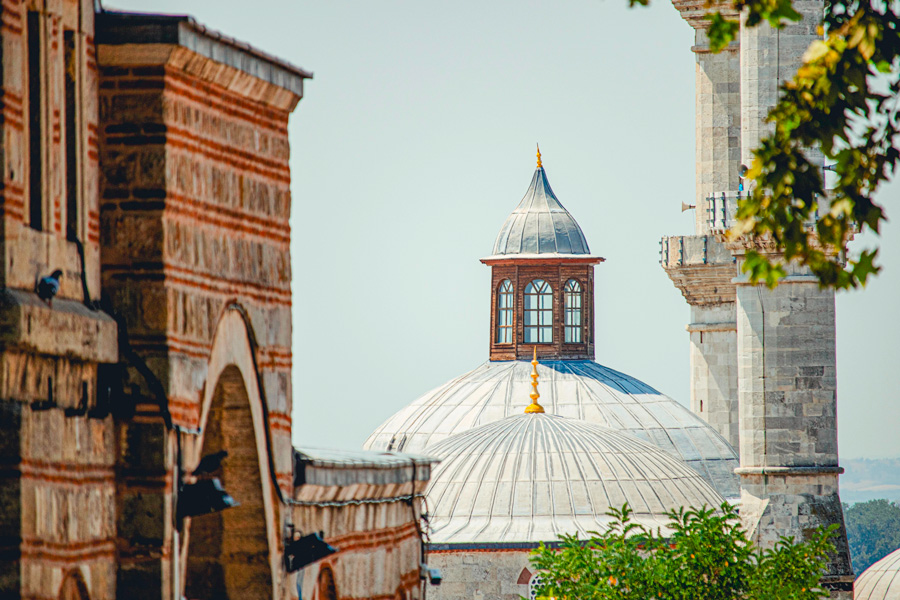
The best places to visit in Edirne include the famous Selimiye Mosque. Here, one should not pass up the chance to explore the fascinating Museum of Health within the Sultan Bayezid II Complex – a historic hospital, now a museum. Besides, Edirne was home to the largest palace in the Ottoman Empire.
In this guide, we have created routes that string together Edirne attractions, such as signature mosques, riverside viewpoints, historical bazaars, and food stops. Don't forget to try the local cuisine, which includes delicious dishes like Edirne meatballs, liver, and baklava.
Selimiye Mosque
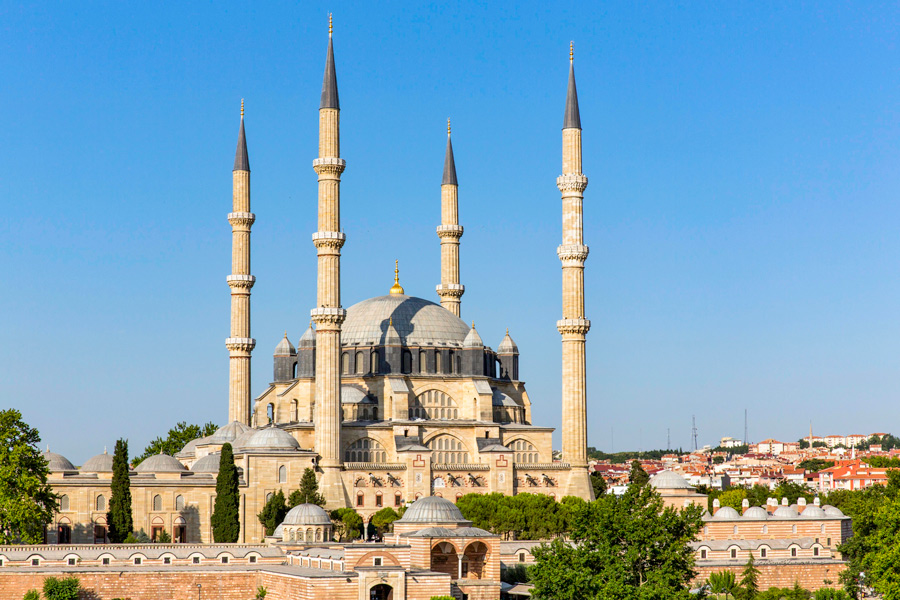
Experience Sinan’s Peak
Edirne sightseeing doesn’t get more essential than standing beneath the grand dome of the UNESCO-listed Selimiye Mosque (Selimiye Camii). It was the late architectural marvel of the Mimar Koca Sinan ibn Abd al-Mannan, the chief Ottoman architect in the 16th century. The mosque features 999 windows, which, by Sinan's design, symbolise the perfection of Allah.
Pro Tip: Entry to Selimiye Mosque is free, but come outside prayer times to see the interior (this is true for all mosques). Most travellers arrive through the Selimiye Arasta Bazaar, where stalls sell souvenirs. If you would rather skip the long stairs at the main gate, use the back entrance for easier access.
Old Mosque

Admire Islamic Art
Directly opposite the Selimiye Mosque, you’ll find the Old Mosque (Eski Camii), which was opened in 1414. It is the oldest of Edirne’s great mosques, known for massive calligraphic inscriptions that cover the walls. Due to its Ottoman architectural and spiritual heritage, it is a key stop on Edirne cultural tours.
Üç Şerefeli Mosque
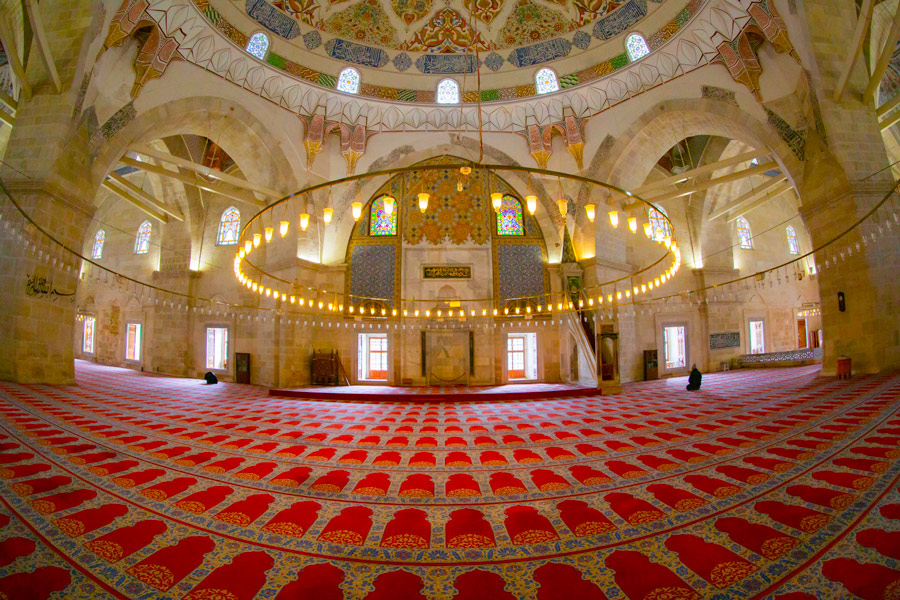
Observe Four Distinct Minarets
No city tour of Edirne's sacred sites is complete without visiting the Üç Şerefeli Mosque. Built in the 15th century, this worship site is a landmark of architectural experimentation. Its name, “Three Balconies,” comes from a minaret adorned with three balconies.
Pro Tip: Dress modestly and remove your shoes before stepping inside. Unlike the busy Selimiye Mosques, this peaceful spot is less crowded. You may find yourself with only local children playing in its cool halls for company.
Edirne Museum
See Reconstructed Thracian Hut
Edirne’s history stretches back to ancient Thrace, and the Edirne Archaeology and Ethnography Museum (Edirne Arkeoloji ve Etnoğrafya Müzesi) is the guardian of this legacy. Its most captivating exhibits await in the courtyard: a mysterious prehistoric dolmen and an evocative replica of a Thracian hut. It is a top spot for anyone interested in visiting Edirne.
Edirne Town Hall
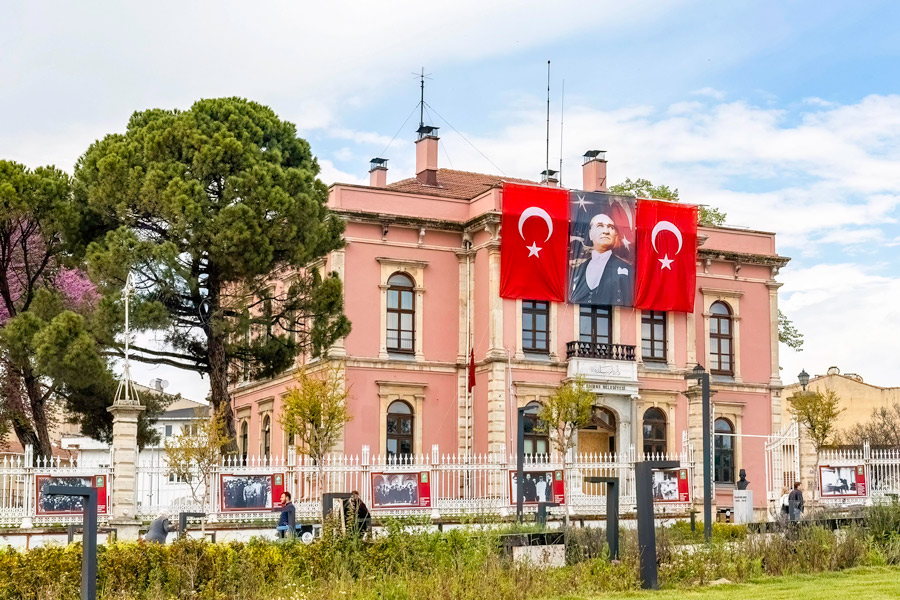
Connect with Atatürk’s Presence in Edirne
The historic Edirne Town Hall or Edirne Municipality (Edirne Belediyesi) is found northwest of Selimiye Square (Selimiye Meydanı) on Mimar Sinan Street. Designed by local architect Nazif Akanlar in the late 1800s, it is one of the notable things to see in Edirne. The building preserves the room of Mustafa Kemal Atatürk (1881-1938), the founder of the Turkish Republic.
Sultan Bayezid II Complex
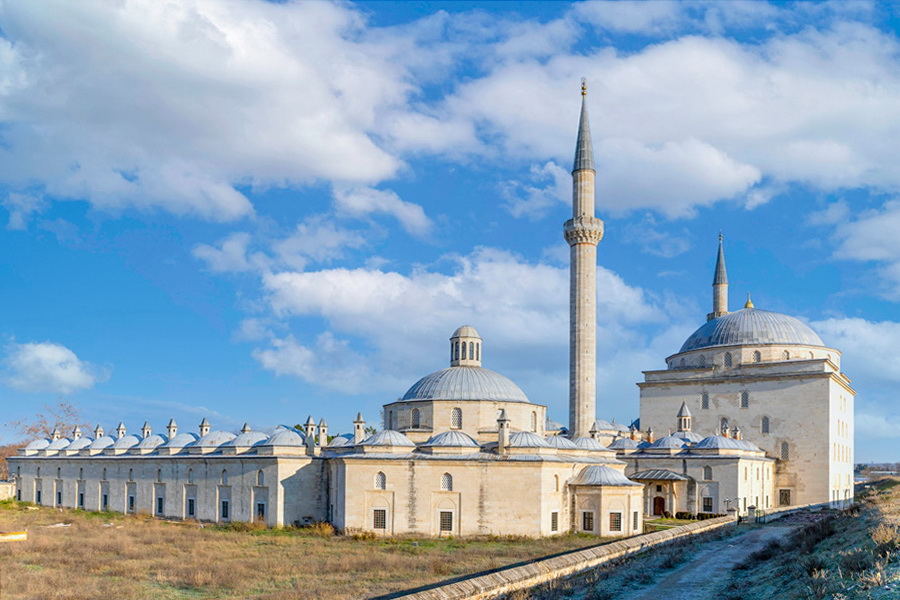
Trace Medical Genius of Avicenna and Al-Farabi
This is not just another historical site in Edirne, but an incredible journey into the past. Opened in 1488, the Sultan II Bayezid Complex (Sultan II Bayezid Külliyesi) encompassed a mosque (Beyazıt Camii), hospital, medical school, and kitchen. Today, the Health Museum (Sağlık Müzesi) highlights Edirne tourism. It is constantly rated the city’s second-most visited site after Selimiye. The exhibits show Ottoman approaches to music therapy, hygiene, and healing of mental and physical illnesses.
Pro Tip: You need to buy a ticket for the Health Museum.
Selimiye Arasta Bazaar
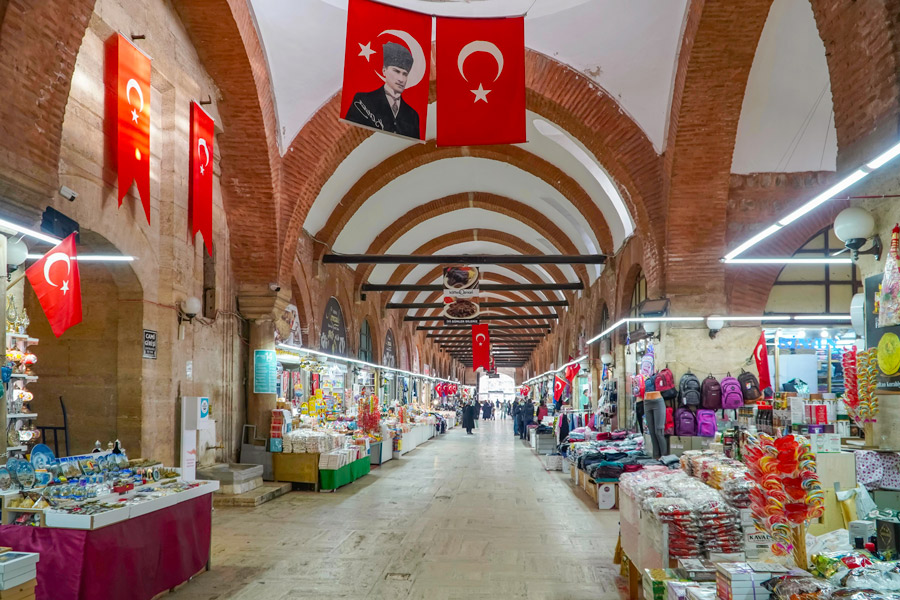
Find an Authentic Souvenir
The Selimiye Arasta Bazaar near the mosque (Selimiye Arasta Carsisi) is where a journey through the city becomes a tactical adventure. This popular shopping destination in Edirne was originally built to fund the mosque’s upkeep. Its arches house shops that sell everything from traditional textiles to the city’s favourite almond and pistachio cookies.
Rüstempaşa Caravanserai
Sleep within Living History
Rüstempaşa Caravanserai (Rüstempaşa Kervansaray) was commissioned by Rüstem Pasha, the Grand Vizier of Suleiman the Magnificent and constructed by Mimar Sinan in 1561. It is a fine example of classic Ottoman architecture. Restored in 1972 and converted into a hotel, it is the most unique place to stay in Edirne.
Grand Synagogue of Edirne
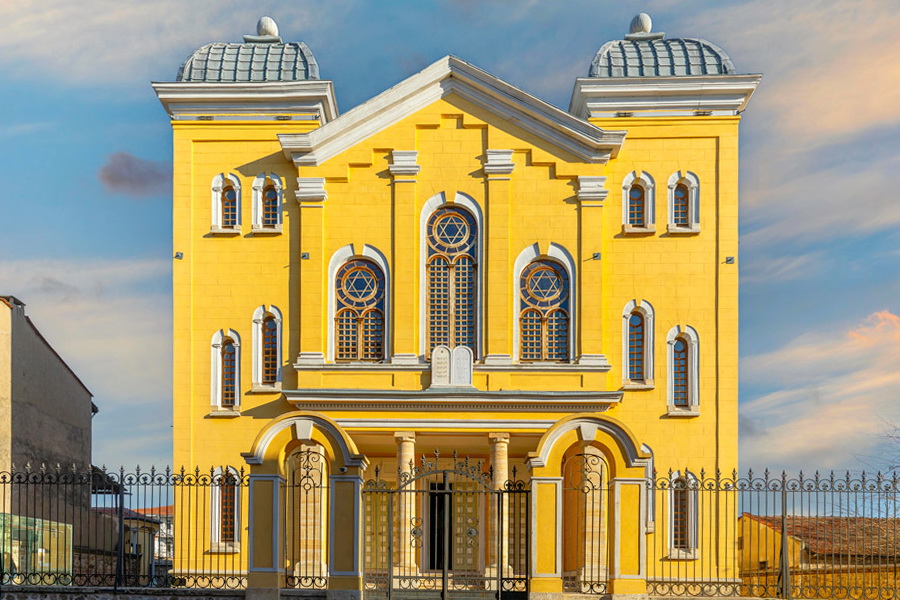
Visit the Largest Synagogue in Turkey
Among the best things to do in Edirne with a different lens is taking in the Grand Synagogue of Edirne (Edirne Büyük Sinagogu). It was built in 1907 after a devastating fire that also destroyed 13 other smaller synagogues. At that time, it was the largest in the Balkans and the third-largest in Europe. After decades of neglect, it was restored and reopened in 2015.
Saraçlar Street
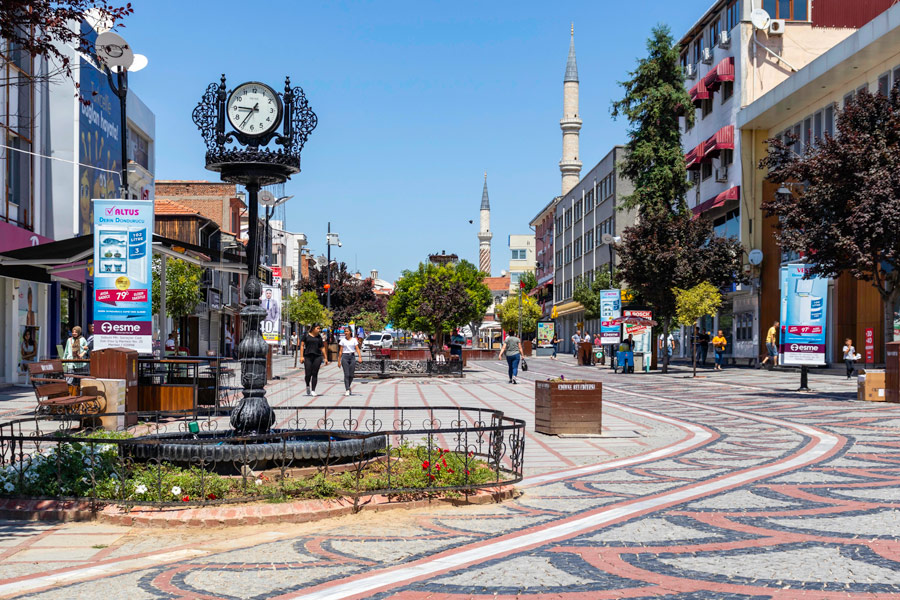
Unwind and Shop in Edirne
Saraçlar Street, a famed pedestrian avenue in Edirne, is in the league of Edirne sights where locals come to stroll, shop, and sip coffee. It is also a magnet for day-trippers from nearby Greece and Bulgaria, who cross the border to shop in its boutiques. Along the way, you will spot historic facades, fountains, and plenty of benches. Often compared to Istiklal Avenue in Istanbul, Saraçlar sees fewer crowds. It is a place to feel the pulse of Edirne through its vibrant promenade.
Tunca Bridge and Maritsa Bridge
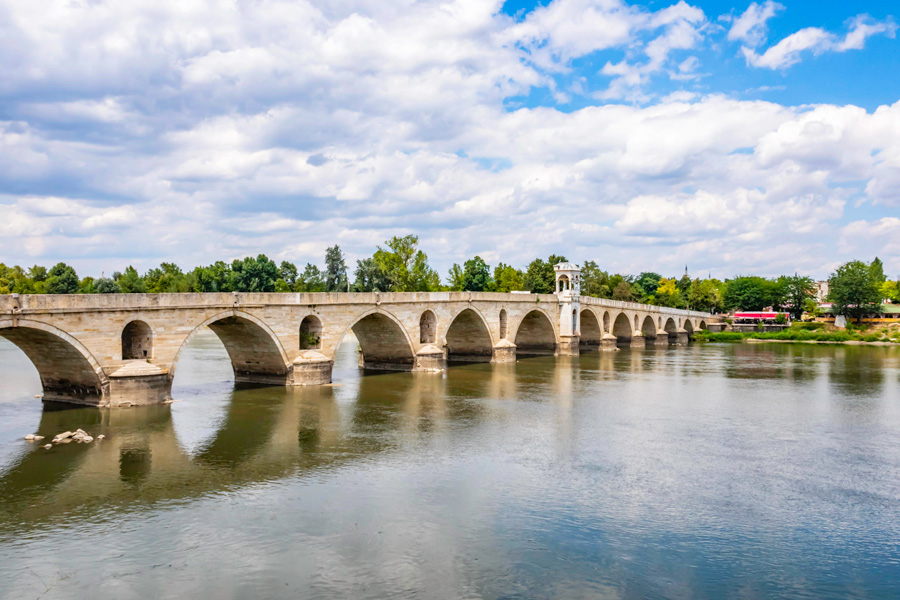
Walk the Twin Rivers
One of the places in Edirne to visit for photos is the Tunca Bridge (Tunca Köprüsü), built between 1608 and 1615, officially named Ekmekçizade Ahmet Pasha Bridge. Just 400 metres away is the Maritsa Bridge (Meriç Köprüsü). Its construction was completed in 1847, so locals call it the New Bridge (Yeni Köprü). These bridges over the rivers connect the city centre to the Karaağaç district. The real thing to do here is to find a spot at the little café and watch the sunset. It is the lasting local encounter in Edirne that slows down time.
Karaağaç
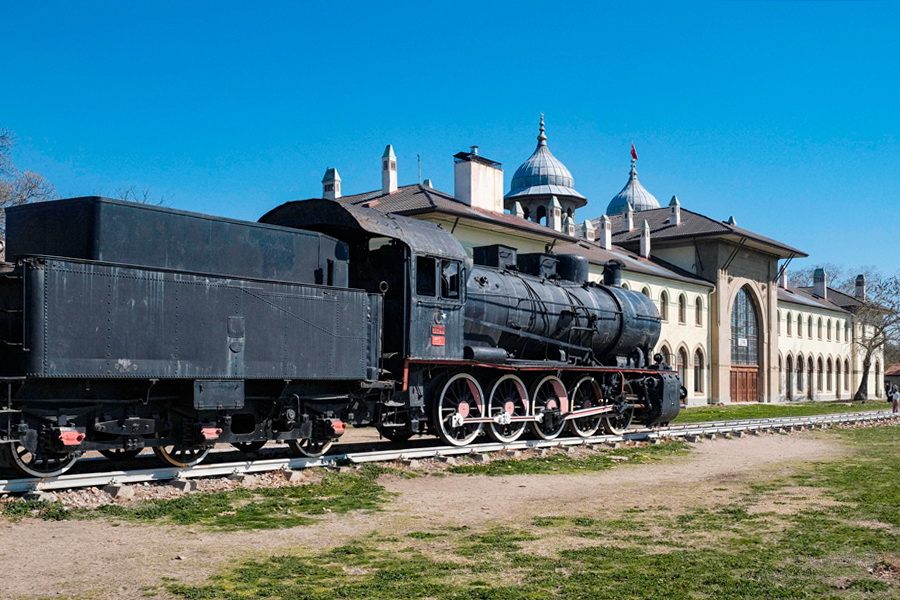
Leisure Amid the Great Nature with Many Restaurants
The Karaağaç district lies across the Meriç River, rendering a different ambience from the city’s downtown with its leafy streets and historic charm. The Edirne attractions here are the old Karaağaç Train Station (Karaağaç Tren Istasyonu) and the Lozan Monument (Lozan Anıtı).
The former was once part of the railway linking Istanbul to Europe and a stop on the legendary Orient Express to Paris. Today, the elegant station buildings house Trakya University’s Faculty of Fine Arts, and guests can see a German-built locomotive from 1910 in the garden. The nearby Lozan Monument commemorates the 1923 Treaty of Lausanne, which defined modern Turkey’s western borders.
Pro Tip: The district is easily reached from central Edirne by bus, dolmuş, or taxi. Karaağaç also hosts the Pazarkule-Kastanies border crossing into Greece, a convenient alternative to the congested Kapıkule checkpoint on the Bulgarian border.
Yalnızgöz and Beyazıt II Bridges

Historic Crossings Over the Tunca River
The Yalnızgöz (“Lonely Eye) Bridge, built in 1567 by Mimar Sinan under Sultan Selim II, is a graceful single-span structure that once formed part of the imperial expansion to Europe. Beyond it lies the Beyazıt II Bridge (II. Bayezid Köprüsü). It was completed in 1488 to connect worshippers with the new mosque complex and its soup kitchen. Though nearly a century apart in age, the two Edirne sights appear as one, joined by an arched passage added in 1611. They were restored in 2012.
Edirne Palace

See the Remains of the Structure
Once rivalling Istanbul’s Topkapı in size and grandeur, the Edirne Palace (Saray-ı Cedid-i Amire) was built in 1450 by Sultan Murad II and expanded by later sultans, Mehmet the Conqueror and Suleiman the Magnificent. Though much of it was lost to fire, earthquakes, and war, tourists can still witness remnants such as the Justice Pavilion and Imperial Kitchens on Sarayiçi, by the Tunca River. Ongoing excavations and restorations reveal glimpses of its former splendour and place it in the list of Edirne's popular destinations.
Pro Tip: This historical site in Edirne is temporarily closed due to restoration works.
St. Constantin and Helena Bulgarian Orthodox Church

Check Out the Site of Orthodox Heritage
For Edirne travel focused on cultural diversity, the Church of St. Constantine and Helena, a Bulgarian Orthodox church, is a meaningful stop; the other being St. George’s Church. It was built by the Bulgarian community in 1869. Located in the city that borders Bulgaria, it reflects the close cultural and religious ties between the regions.
The three-nave basilica design, stone walls, and beautifully restored iconostasis of 74 icons reflect classic 19th-century Orthodox architecture. The church was renovated in 2008 with the Bulgarian government's support.
Pro Tip: Although often closed, newcomers can usually arrange to see its interior with the caretaker’s help.
Muradiye Mosque
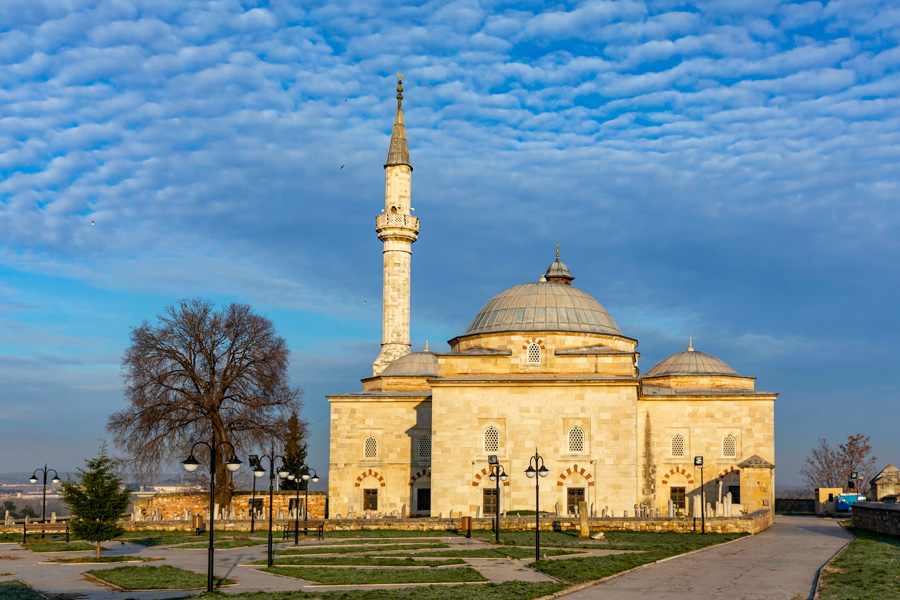
Discover an Early Ottoman Gem with Dervish Origins
This landmark is a must on any list of Edirne top sites. Constructed between 1426 and 1436 by Sultan Murad II, the Muradiye Mosque (Muradiye Camii) was originally intended as a lodge for Mevlevi dervishes before being transformed into a place of worship. Its T-shaped design and portico recall the style of Bursa’s Green Mosque; inside, rare 15th-century Iznik tiles line the walls. Earthquakes and time have damaged parts of the building. Yet the surviving tiles and frescoes give the prayer hall a rare beauty.
Pro Tip: The hilltop setting of the mosque rewards sightseers with scenic views over the city.
Fortifications and Macedonian Tower
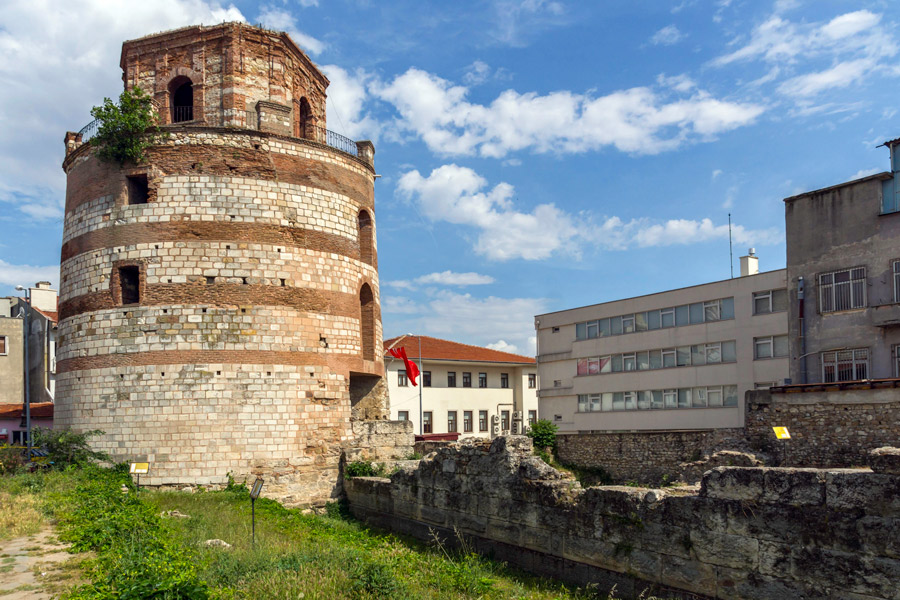
A Glimpse of Hadrian’s Ancient City in Today’s Edirne
For those seeking historical things to do in Edirne, the remains of Hadrian’s fortress, where Roman walls still rise at the base of the Macedonian Tower (Makedonya Kulesi) in the city centre, are the perfect choice. Once part of Hadrianopolis, these fortifications were later expanded in the Byzantine era to defend against Bulgarian raids. Archaeological digs have revealed pottery kilns, furnaces, and even a ruined basilica.
Pro Tip: Entrance to the ruins is free, and the site has several information boards, some bilingual, others only in Turkish. The tower can be viewed only from the outside; recent visitors noted restoration works in progress, but it hasn’t yet reopened.
Kırkpınar House
Where Turkey’s Ancient Sport Comes to Life
Among the most distinctive Edirne landmarks is Kırkpınar House (Kırkpınar Evi), a museum celebrating the tradition of Turkish oil wrestling. Inside, you will get up close with the golden championship belts, traditional gear, and exhibits that explain this fascinating national sport. See life-sized displays of wrestlers, musicians, and announcers that vividly recreate the atmosphere of the historic Kırkpınar festival.
Pro Tip: Kırkpınar Evi is located in a historic building in Edirne downtown. It is surrounded by a nice garden. You can relax over tea or breakfast at the on-site café.
Edirne Merkez Saray Hamamı
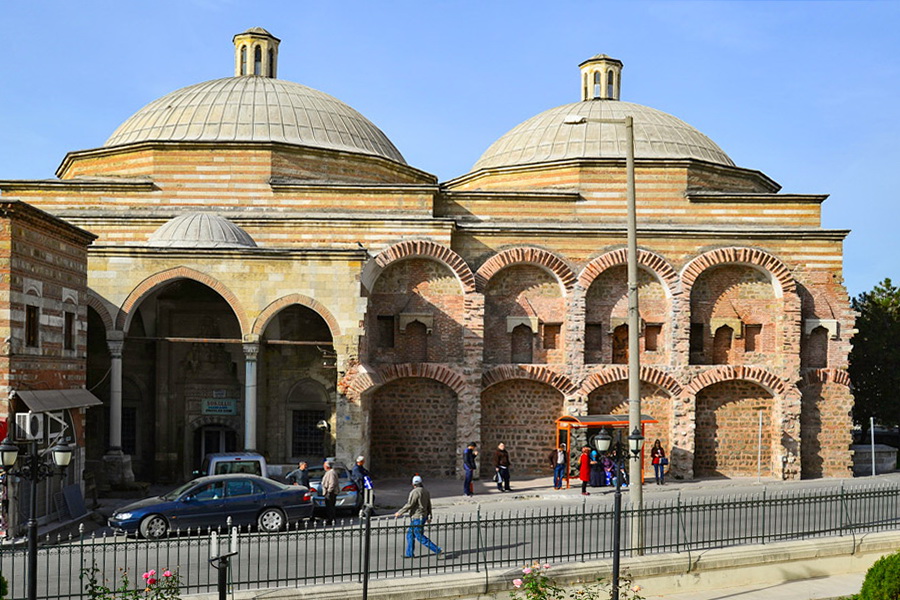
Indulge in the Ottoman Relaxation Ritual
For more local experiences in Edirne, don’t miss the 14th-century Edirne Merkez Saray Hamamı. It was part of the Old Palace, where Sultan Mehmet II was born. The baths were later transformed into a public hamam serving townspeople for generations. Though abandoned after the Balkan Wars, the premises were restored and reopened in 2009. Holidaymakers can browse the oldest surviving double-bath design while enjoying the Ottoman ritual bathing.
Pro Tip: Entrances are separate – women enter from the east side, men from the west. Prices vary with treatments and time spent. The hamam is open daily from 9:00 am to 8:30 pm.
Things to Do in Edirne in 1 Day
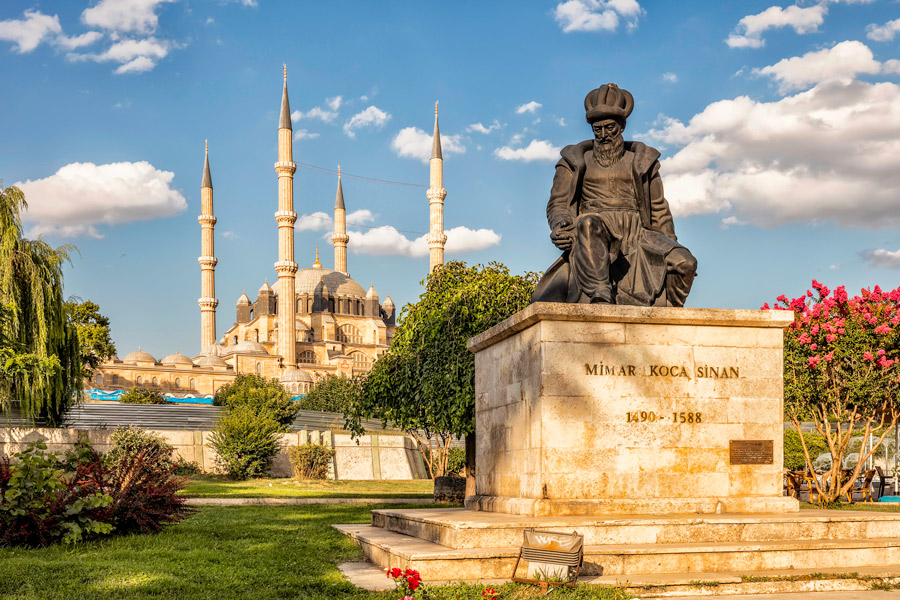
An exciting day in Edirne could include visits to the Selimiye Mosque and its Social Complex, Sultan Beyazid II Complex, Selimiye Arasta Bazaar, and Meriç Bridge. Most of Edirne attractions are located in close proximity to each other. Here is a possible itinerary:
Morning:
Begin your day at the magnificent Selimiye Mosque. If you are driving on the O-3/E80 and D-100 routes, you will be greeted by the four needle-slender minarets long before you reach the centre. Spend time absorbing its grandeur inside and out.
- Check out the following Edirne destinations: The Selimiye Complex is home to the Selimiye Foundation Museum (Selimiye Vakıf Müzesi) and the Turkish and Islamic Art Museum on the grounds of the Dar-ül Hadis Medrese. Pay attention to the Monument of Mimar Sinan (1490-1588) to the left of Selimiye Mosque.
Late Morning:
Walk to the adjacent Selimiye Arasta Bazaar to shop and sample local sweets. Which souvenirs to bring home from Edirne?
- Badem ezmesi: a marzipan-like sweet made from almonds.
- Fruit soap: Colourful and scented soaps shaped like fruits can be used as decorative pieces and natural air refreshers.
Lunch:
Head to the renowned Aydın Tava Ciğer restaurant to taste the city’s world-record-holding fried liver (tava Ciğer) dish – a true Edirne culinary must-do.
Afternoon:
Learn about Edirne’s history at the Sultan Beyazid II Complex and its award-winning Health Museum.
Late Afternoon:
Stroll across the Meriç Bridge and sit by the river in the covered outdoor dining area of Lalezar Restaurant.
Evening:
Wrap up your Edirne city tour in the Karaağaç neighbourhood with a delicious dinner at Hasbihal22 Restaurant.
What to Do in Edirne in 2 Days
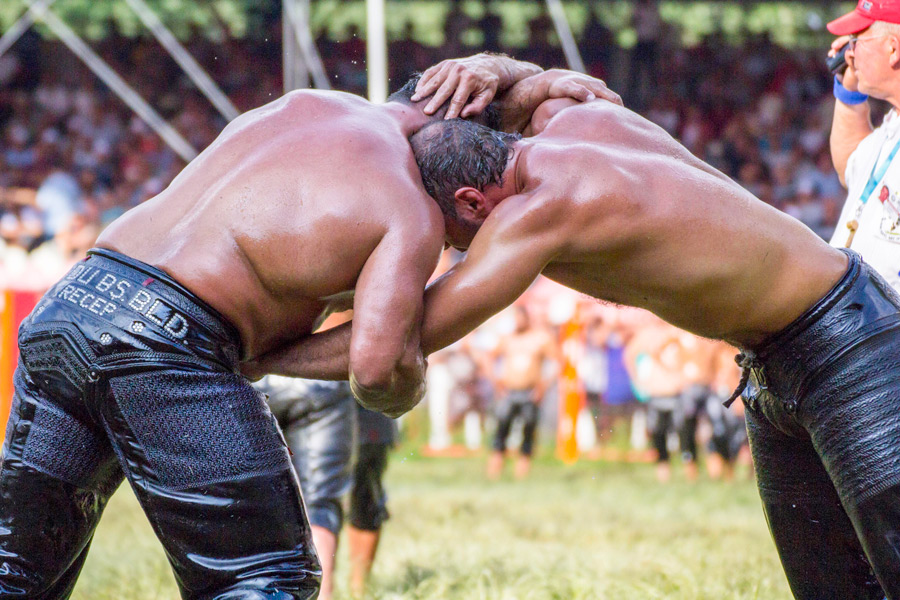
A two-day stay gives a deeper insight into the city’s rich layers, making it a perfect Edirne weekend getaway. This itinerary combines iconic landmarks with hidden gems.
Day 1: Follow the intensive one-day route outlined above to cover the top sites in Edirne.
Day 2: Dedicate your second day to further exploration.
Morning:
Many cultural tours in Edirne will guide you to the Eski Camii (Old Mosque) and the Üç Şerefeli Mosque.
Mid-day:
While in the city centre, make it to the remaining sections of the ancient city and the Macedonian Tower. Then head off for lunch at Bülent Börekçilik Edirne Çavuşbey Şube. Customers praise their börek – fried pastries filled with cheese. After a good meal, tour the ruins of the Edirne Palace (Edirne Sarayı).
- During the oil wrestling season, the Sarayiçi district becomes an epicentre of this traditional Turkish tournament. The Kırkpınar Oil Wrestling Area (Kırkpınar Yağlı Güreş Alanı) is near the palace. Visiting Edirne during this time will be one of the unique things to do in Edirne.
Afternoon:
A local market experience awaits travellers at the Bazaar Bedesten (Bedesten Çarşısı) in the immediate vicinity of the Old Mosque. In addition, they can appreciate its architecture. Other historic bazaars in Edirne are the Ali Pasha Bazaar and the Selimiye Arasta Bazaar. It is the perfect place to stop for a cup of Turkish coffee or tea and do a spot of people-watching.
Evening:
Soothe your muscles after all the walking in the historic Sokullu Mehmet Pasa Baths, designed by Mimar Sinan. Follow this with a final memorable dinner, perhaps trying another of the city’s excellent Turkish cuisine spots. If you prefer a European restaurant, go to Vargo Restaurant & Bar. Apart from a great atmosphere and delicious food, the venue boasts a nice view over Edirne.
Top Things to Do in Edirne in 3 Days

Three days in Edirne are enough to cover the city’s highlights.
Day 1 &2: Follow the suggested itinerary for one day and two days to unveil the main historical sites in Edirne and enjoy its offerings.
Day 3: Deeper Cultural Insights and Local Flavours
Morning:
First, you must see the elegant old Karaağaç Train Station in the Karaağaç district and the nearby Lozan Monument. Continue to Hasbahçe 22.5. Their menu caters to a Crimean Tatar dish called çiğ börek (a crispy pastry filled with seasoned ground beef), accompanied by a warm, comforting cup of salep.
Afternoon:
Return to the city centre and visit the ornate Muradiye Mosque. Afterwards, discover a different facet of the city’s history at the Bulgarian Church of St. Constantine and Helena. Note that the church is open all days except Monday and typically closes at 5 pm.
Dinner:
End the evening at the rooftop Ponsetya Restaurant of the Cavit Duan Hotel. Alternatively, you can spend the rest of the day at the shopping mall Erasta Edirne AVM adjacent to Atatürk Boulevard.
Edirne is such a special city when it comes to mosques and Ottoman architecture. Whether you are exploring Edirne on a day trip to Istanbul or embarking on a longer cultural journey, the city delivers far more than expected. Edirne is a treasure chest of history, diversity, and timeless beauty, from Ottoman mosques and Orthodox churches to ancient Roman towers and Ottoman palaces. Its walkable city centre, friendly locals, and riverside location allow every traveller to slow down, soak in the atmosphere, and discover why it is among the must-see Türkiye attractions.

